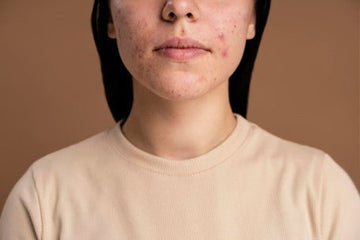Beauty Tips Rooted with TCM for Natural Skin
6 essential steps to a brighter clearer complexion
Oct 16, 2019
Everyone wishes for a bright and clear complexion without dark spots or hyperpigmentation. How do we achieve clear and radiant skin?
First let us understand a bit more about skin pigmentation and what causes excessive pigmentation, melasma or dull complexions.
Melanocytes are melanin-producing cells located in the bottom layer (the stratum basale) of the skin's epidermis and also found in other parts of the body like our hair and eyes. Melanin is a dark pigment primarily responsible for skin colour. Through a process called melanogenesis, melanocytes produce melanin. Once synthesized, melanin is transported to nearby outermost layer of skin cells (keratinocytes) to induce pigmentation. Functionally, melanin serves as protection against UV radiation. Exposure to UV-B radiation causes increased melanogenesis. The purpose of melanogenesis is to protect the hypodermis, the layer under the skin, from damage by UV-B radiation. The colour of the melanin is black, allowing it to absorb a majority of the UV-B light and block it from passing through the epidermis.
Tyrosinase is an enzyme for controlling the production of melanin. Tyrosinase is a copper-containing enzyme present in plant and animal tissues that catalyses the production of melanin and other pigments from tyrosine by oxidation. It is found inside melanosomes which are synthesised in the skin melanocytes. Tyrosinase activity is very important. If uncontrolled during the synthesis of melanin, it results in increased melanin synthesis. Increased tyrosinase activity has been related to the hyperpigmentation of the skin, such as melasma and age spots.
Top causes for increased pigmentation
-
Increased exposure to UV rays- UV rays are the number one cause for hyperpigmentation and formation of dark spots
-
Use of skin care products that contain harmful ingredients or toxic metals such as lead & mercury, coal tar, benzenes, synthetic chemicals or fragrances. These substances are toxic and irritate the skin. Some of them absorbs UV rays and increase the rate of melanogenesis.
-
Use of expired skincare products- some expired products may irritate the skin causing inflammation and hyperpigmentation.
-
Malnutrition or unbalanced diet eg. prolonged intake of high levels of Copper, Zinc, Iron will stimulate excessive production of tyrosinase and hence leads to hyperpigmentation of the skin. Lack of Vitamins A, B and C and proteins in our diet will also lead to formation of dark spots.
-
Changes in levels of hormone estrogen mainly due to menopause or hormone disorders.
-
Excessive force or abrasive action when washing/scrubbing face resulting in inflammation and post-inflammatory pigmentation
-
High levels of stress causing moods swings and increased production of melanin and formation of dark spots.
Excessive intake of certain foods may also lead to hyperpigmentation:
-
Animal organs such as liver and kidney

-
Sweet Basil, Chives, Celery and Coriander
-
Black sesame
-
Raisins
-
Cola beverages

-
Coffee
-
Alcoholic beverages
-
Contraceptives
6 Essential steps to a brighter clearer complexion
-
Use Sunblock! This is very important as UV rays are the main cause of pigmentation.
-
Increase intake of Vitamin C rich foods and ensure healthy balanced diet.
-
Ensure sufficient intake of water to hydrate the skin which improves metabolism and aids removal of metabolic waste.
-
Use of suitable skincare products and facial masks to improve hydration and protection from environmental factors. Ensure products are not expired or laden with additives or chemicals that irritate your skin.
-
Reduce or stop smoking- smoking depletes Vitamin C levels and slows down metabolism and blood circulation especially at skin resulting in poor skin quality and accumulation of dark pigments.
-
Ensure sufficient sleep of 8 hours daily and go to bed before 11pm. This is the best time for the body to heal and regenerate.







